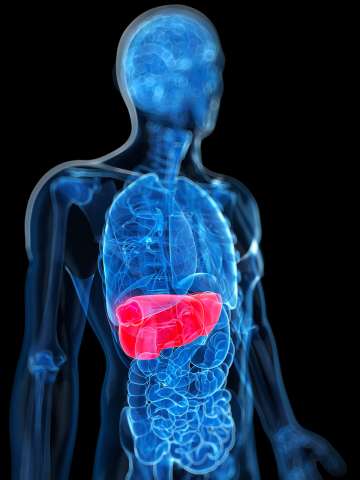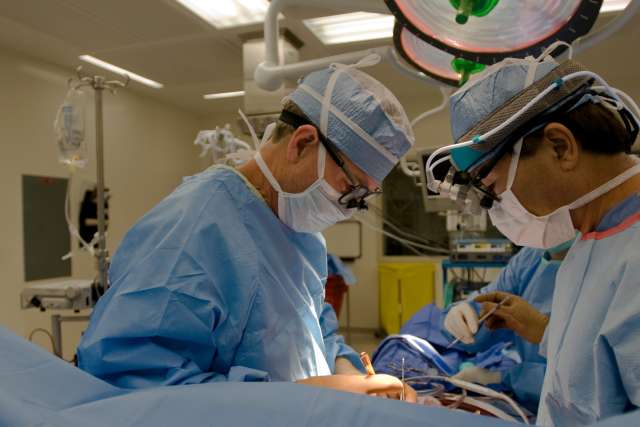Liver Transplant
The UCLA Health Liver Transplant Program is one of the most established, active programs of its kind in the country.

Why choose UCLA Health for liver transplant?
The specialists in the UCLA Liver Transplant Program are international leaders in liver transplant procedures and technology. We have one of the oldest and most active programs in the country and some of the most experienced surgeons in the western United States treating liver disease.
Our team of clinicians, researchers and surgeons doesn’t just specialize in the newest and best techniques — we helped develop them. When you choose UCLA Health for a liver transplant, you benefit from:
Excellent outcomes: We consistently meet and exceed the national averages in terms of both patient and graft survival. We are a Center of Excellence provider and a referral center, meaning we treat patients with the most complex liver conditions.
Full-spectrum care: We coordinate with multiple UCLA Health specialists to offer a wide range of services. For example, through the Pfleger Liver Institute, patients have access to care for all types of liver disease. Thanks to our partnership with hepatobiliary surgeons, we are one of the only institutions in the country that offers liver transplants for cancer that forms in bile ducts, called cholangiocarcinoma.
Seamless transitions: Through collaboration with UCLA Mattel Children’s Hospital, we offer pediatric-to-adult care in one convenient setting. Our collaborative, multidisciplinary team cares for both children and adults, and our dedicated specialists help children make a smooth transition to adult care.
Clinical trials: Thanks to our research team, patients have access to promising new therapies. Many of the treatment protocols we developed are now commonly used in other transplantation programs worldwide.
Our areas of care
Highlights of our Liver Transplant Program include:
Adult liver transplants: Our team has performed more than 7,000 liver transplants. We have achieved international recognition for our program and have developed many pioneering treatments that are now used worldwide.
Pediatric liver transplants: Our team at UCLA Mattel Children’s Hospital has performed more than 1,000 pediatric liver transplants. This high volume makes our Pediatric Liver Transplant Program one of the largest, most reputable programs of its kind in the world.
Living donor liver transplants: We are one of the only locations in the western United States where patients have access to living donor liver transplants. Since 1993, we have performed more than 100 of these procedures for adult and pediatric patients.
Hepatobiliary surgery: If you have hepatitis C, advanced liver disease or another condition that requires a liver transplant, you may need specialized treatment while awaiting your transplant. Our hepatobiliary surgeons work together with transplant surgeons and the Dumont-UCLA Liver Cancer Center to evaluate and treat all patients with liver disease.
Conditions we treat
If your liver stops working properly, you may need a liver transplant. There are several reasons why your liver may fail, including:
- Autoimmune hepatitis: When your immune system attacks your liver, causing it to become inflamed.
- Cirrhosis: When healthy liver tissue is replaced with scar tissue, often because of alcohol abuse or hepatitis.
- Cholangiocarcinoma: Cancer that forms in your bile ducts, the tubes that carry fluid from your liver to your intestines.
- End-stage liver disease (liver failure): Liver failure occurs when your liver stops performing its functions, such as storing sugar, breaking down saturated fat and ridding your body of drugs, alcohol, and other toxins.
- Hepatitis C: A liver infection caused by the hepatitis C virus.
- Liver cancer: When cancerous cells begin in your liver.
- Combined Heart and Liver Disease: Most patients who have had a Fontan procedure, a type of open-heart surgery, experience liver congestion and fibrosis that may lead to liver failure. At UCLA Health, specialists from multiple disciplines work together to help patients with the highest risk of combined heart and liver disease.
Our expert team
For more than 25 years, our program has been among the top liver transplant programs in the United States. Our providers understand that a liver transplant can affect your whole life. We work closely with you and your family and use a patient-centered, compassionate approach to help you make the best decisions in complex situations.
Transplant Surgery
Transplant Hepatology

Contact us
Call 310-825-8138 to request an appointment with the Liver Transplant Program at UCLA Health.
Find your care
We are leaders in both clinical care and research, and have helped develop leading-edge transplant techniques. To learn more, call 310-825-8138.









